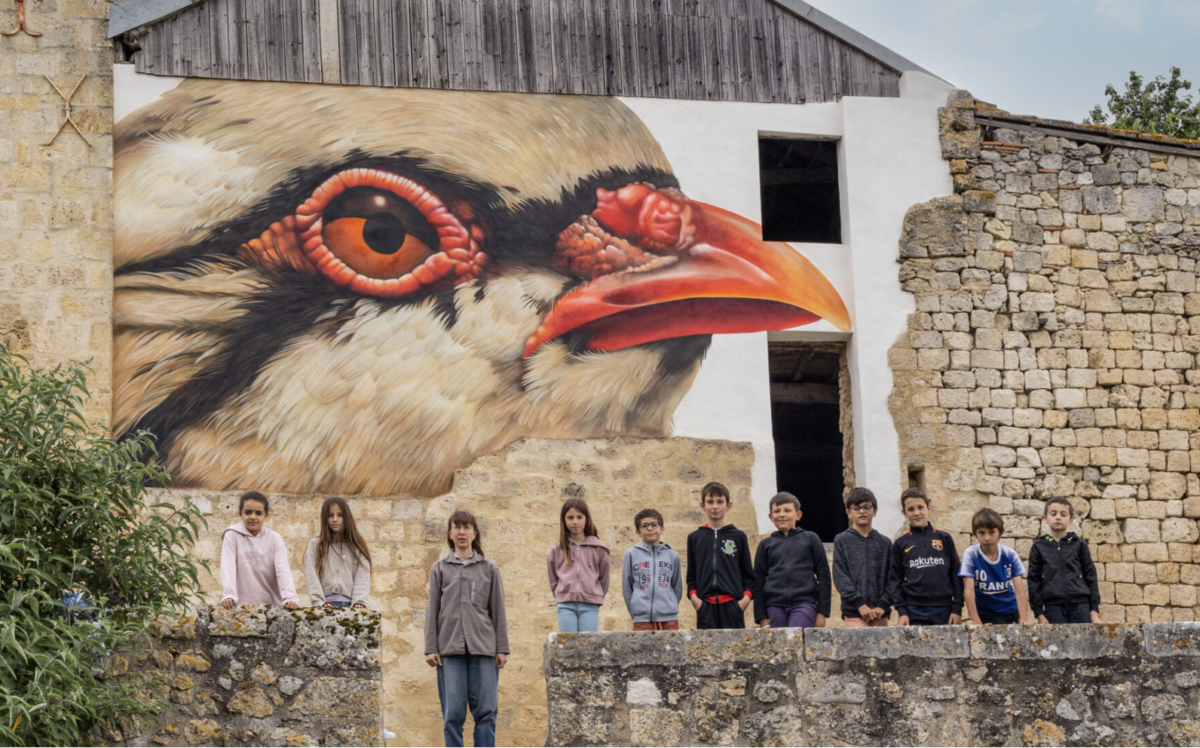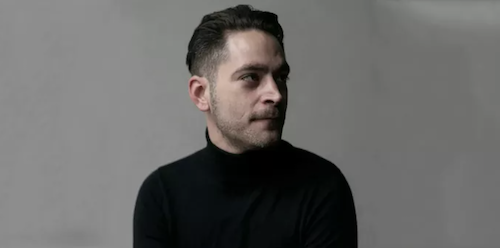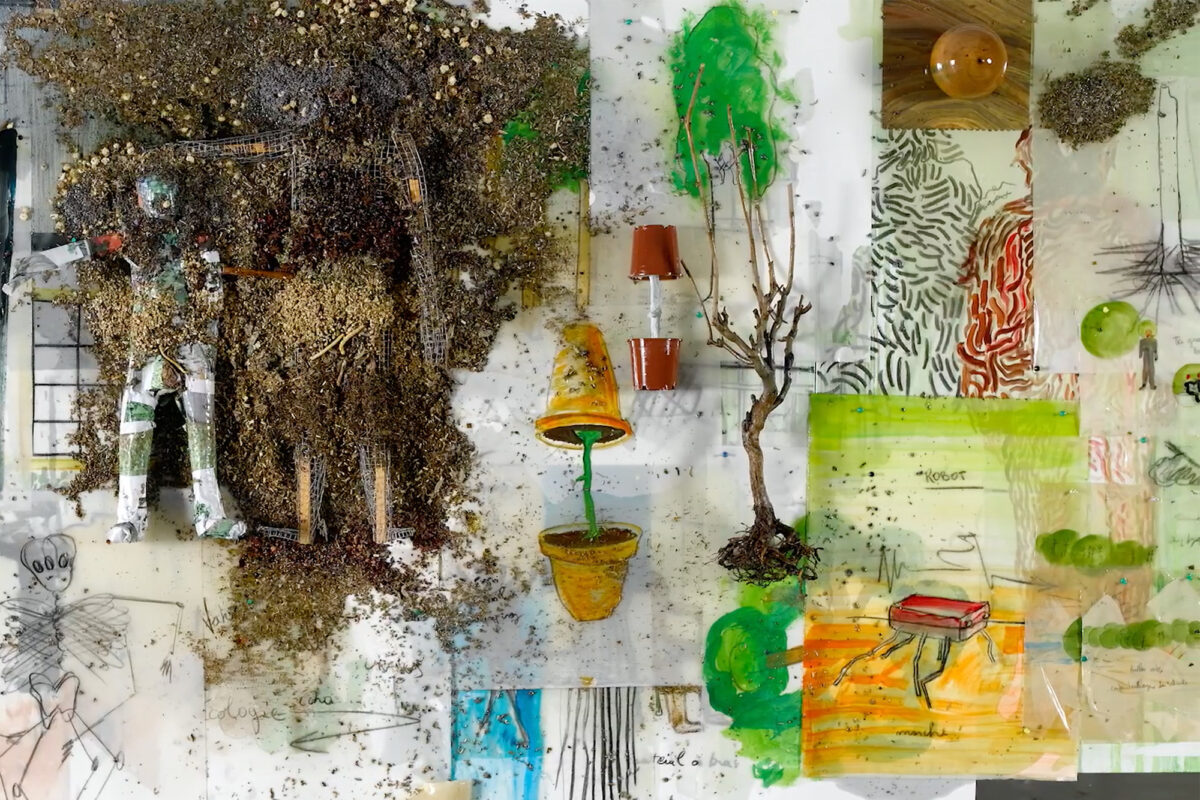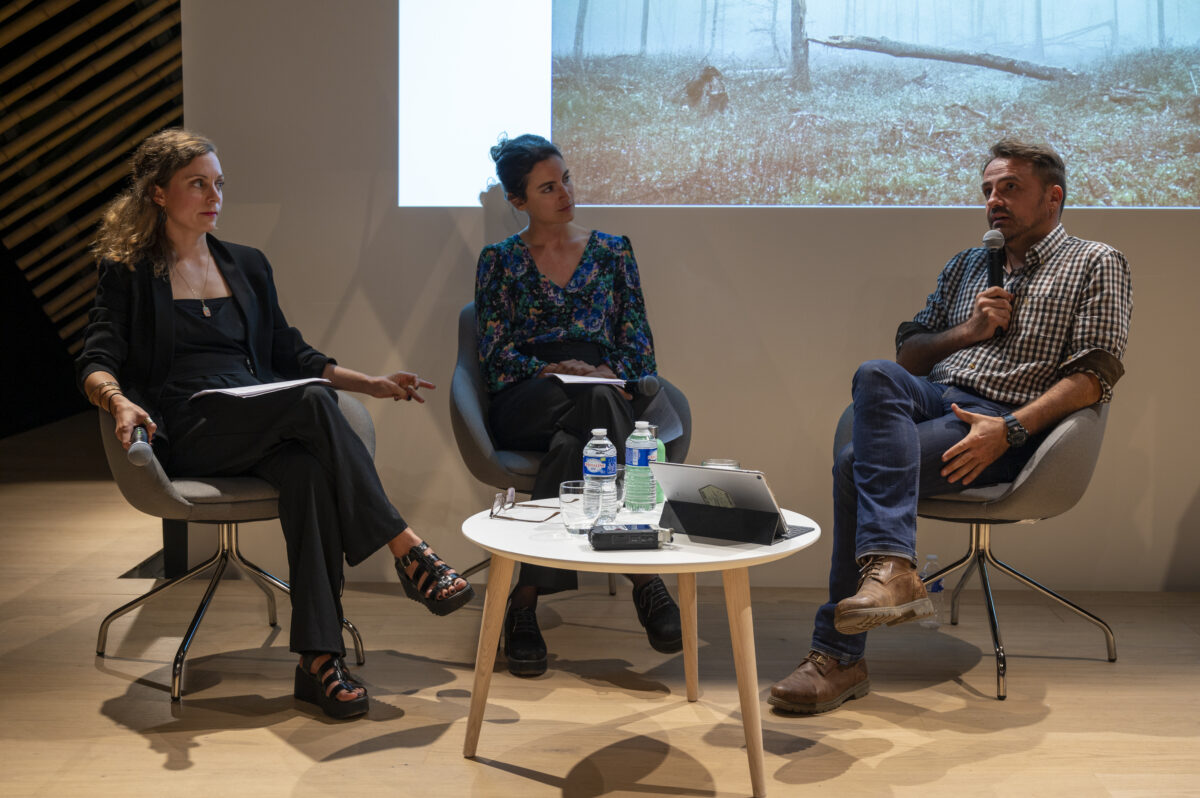
ACT: ART CLIMATE TRANSITION
ACT est un projet de coopération européenne consacré à l’écologie, le changement climatique et la transition sociale
Publié le 24 novembre 2020
Comment penser ou repenser l’écologie aujourd’hui ? Alors que l’urgence climatique et environnementale a été déclarée, l’ambassade de France à Pékin et le consulat de France à Shanghai collaborent pour constituer une petite bibliothèque de l’environnement, de la transition écologique et de la biodiversité telle qu’elle est intellectualisée en France.
Cette série de textes d’intellectuels français seront traduits en chinois et publiés sur nos réseaux avant d’être relayés par notre partenaire média The Paper.
La parole est donnée cette semaine à Loïc Fel, docteur en philosophie de l’Université Paris 1 Panthéon-Sorbonne, PDG de l’agence influence for good, et co-fondateur de COAL.
LA NOUVELLE ARCADIE
Texte de Loïc Fel,
Traduit par Huang Lina
L’écologie a besoin d’un imaginaire
À l’heure où l’humanité fait face à une crise globale et systémique, aussi bien écologique qu’économique, sociale et de gouvernance, elle recherche un modèle d’avenir qui concilie les bienfaits du développement hérité de la révolution industrielle avec une société plus juste, plus équitable et harmonieusement intégrée à la biosphère.
Jusqu’ici, les discours alarmistes ont eu tendance à freiner l’optimisme nécessaire à la mobilisation, et les approches purement politiques (les négociations mondiales des COP par exemple) ou purement technologiques (développement de moyens industriels plus vertueux) sont désincarnées, éloignées du quotidien des citoyens et insuffisantes à la transformation nécessaire de nos modes de vie.
En effet, à chaque profond changement de notre civilisation correspondait un imaginaire, une vision de ce que serait le monde d’après. Un imaginaire suffisamment précis et positif pour que les citoyens aient la motivation de changer et de mettre en œuvre les efforts nécessaires pour réaliser ce changement.
Aujourd’hui cet imaginaire, construction commune issue des réflexions des artistes, des philosophes, des scientifiques, mais aussi, bien sûr, des mouvements populaires, de l’engagement citoyen et associatif, commence à montrer quelques grandes lignes telles que la sobriété heureuse au lieu du consumérisme, une démocratie locale consultative et apaisée adaptée aux réalités des territoires plutôt qu’une centralisation et le nationalisme exacerbé, une intégration de l’homme et de ses activités dans un environnement préservé plutôt qu’une séparation des deux univers et l’exploitation des ressources de l’un pour l’autre de manière linéaire.
Mais ces grandes lignes ont besoin d’être incarnées dans la vision d’un quotidien, à l’échelle de l’individu, pour construire une nouvelle utopie mobilisatrice. Et ce travail d’un imaginaire commun est très exactement une question culturelle, mobilisant la diversité des expressions artistiques contemporaines pour en produire les représentations ou en proposer l’expérience.
Cet imaginaire idéaliste, comme à diverses époques, garde toujours en filigrane celui d’un âge d’or mythique, un temps où la vie quotidienne aurait incarné les valeurs d’équité, de bonheur sobre mais profond, d’inclusion dans la nature etc. Un imaginaire utopique et sans aucune réalité historique qui, pour avoir plus de corps, a au fil des siècles été rattaché à une région, qui en est devenue le symbole : l’Arcadie.
L’imaginaire de l’Arcadie, en dépit du risque de passéisme qu’il pourrait induire, offre une structure pour imaginer le nouveau modèle attendu. Toutefois, l’imaginaire éthéré ne suffit plus face à la finitude du monde et l’aspect résolument physique et concret des défis de l’humanité d’aujourd’hui. Aussi l’utopie doit aujourd’hui se faire par la preuve, s’incarner en un lieu, être pragmatique. Mais cette incarnation ne risque-t-elle pas de faire apparaître chaque projet comme parcellaire ou anecdotique en regard de l’enjeu ? Comment aboutir à un imaginaire global du monde durable ?
Le projet d’imaginer une Arcadie future mondiale, tout en étant pragmatique et concret, est difficile à aborder comme un tout. C’est donc à partir de divers points d’entrées, et dans une perspective à l’échelle de l’individu, que les artistes contemporains engagés explorent ce projet de civilisation.
Une méthode expérimentale pour l’expérience vécue
Pour ce faire, ces artistes semblent développer une méthodologie de création que nous retrouvons peu ou prou dans la plupart des projets. Les projets concernés ne se limitent pas à la production d’un objet, une œuvre, mais se définissent comme des processus. D’ailleurs la plupart de ces artistes se réclament de l’héritage de Joseph Beuys et s’approprient l’idée de sculpture sociale. Ces projets sont implantés, et adaptés à un territoire. Ils sont en général participatifs, écoconçus, d’esthétique sobre, et performatifs, dans la mesure où ils « font » quelque chose. Prenons par exemple le parcours d’art contemporain STUWA développé dans le pays du Sundgau au Sud de l’Alsace. Depuis 2015 chaque année 7 communes différentes parmi les 112 du territoire accueillent un artiste en résidence à partir d’un projet. Celui-ci travaille avec un référent local, loge chez l’habitant, source ses matériaux localement, mobilise des volontaires, et produit un projet qui explore une des questions du développement durable. Par exemple en 2016 l’œuvre du collectif les nouveaux voisins nommée Gemütlichkeit incarne bien cette méthodologie. En effet, les artistes sont partis de la question du bâtit, qui représente à lui seul 23 % des émissions totales de CO2 en France et la part majeure de production de déchets. Ils ont capitalisé sur l’architecture vernaculaire de la maison à colombages en l’actualisant pour être plus performante du point de vue du développement durable, à la fois en intégrant des matériaux locaux recyclés et nouveaux, parfois inattendus comme des chutes de plastiques en lieu et place des tuiles, mais aussi des techniques étrangères comme le fait de brûler la structure en bois des colombages, technique japonaise permettant d’assurer la pérennité du bois. Cette œuvre démonstrative a fédéré une dizaine d’entreprises locales et elle permet d’imaginer de futures propositions pour la construction, l’œuvre d’art ayant servi de prétexte à développer et expérimenter ces nouvelles techniques et nouveaux matériaux.
Gemütlichkeit, création artistique du duo Les Nouveaux Voisins, STUWA, Sundgau, Alsace, 2016
Penser un rétro – futur pour un projet de société
Le futur qui émane de ces projets a la particularité d’à la fois projeter vers l’avenir, tout en réhabilitant des aspects qui paraissent appartenir au passé, d’avant la révolution industrielle, et résolument situationnistes, loin de l’idée de mondialisation. C’est en ce sens qu’une nouvelle Arcadie se dessine, une forme de « rétro-futur », loin de l’imaginaire futuriste habituel.
Les projets des artistes sur ce futur durable ont vocation à être symboliques, conformément au précepte « think global, act local ». En effet, la difficulté à définir une nouvelle Arcadie durable tient notamment au fait qu’elle ne peut être universelle dans son application. Ce qui est durable ici ne l’est pas nécessairement ailleurs, selon les ressources locales, selon les spécificités sociales et culturelles etc… Concevoir un imaginaire avec des principes tels que ceux exposés en introduction, incarné dans des œuvres qui répondent à un contexte local, ne facilite pas la projection de chacun dans le futur. Le cycle d’expositions « Act Global, Think local » au Centre Européen d’Actions Artistiques Contemporaines en 2015 et 2016 explore justement cette contradiction entre la nécessité d’une Arcadie universelle, mais en même temps sa réinterprétation permanente ici et maintenant, partout… Ce cycle qui a rassemblé plus d’une vingtaine d’artistes européens, a proposé aux visiteurs de se réapproprier le monde, à son échelle, pour en devenir acteur, que ce soit sur le marché du CO2 avec Amy Balkin, un système de troc autour de Nicolas Floc’h, ou encore la production alimentaire avec le collectif Art-Act, etc…
Loin de l’idée de globalisation, cet imaginaire doit surtout affronter une difficulté particulière et nouvelle en oscillant entre « low tech » et « high tech ». En effet, les artistes qui imaginent un monde post carbone, et donc post pétrole, gaz et charbon, font face à des restrictions probables telles que pour les transports, les technologies de substitution au carburant fossile tardant à venir. Des restrictions sur les ressources minières et donc certains équipements du quotidien, et enfin des restrictions contextuelles, selon les ressources locales. C’est la première fois qu’un imaginaire de lendemains meilleurs inclut un recul sur quelque chose, et pas simplement un développement… C’est en cela que cet imaginaire est parfois déroutant. Par exemple Laurent Tixador expérimente cette idée de manière radicale avec ses architectures transitoires. Il investit seul et sans aucun matériel un espace, comme une forêt, puis se crée des outils à partir des matériaux du site, fabrique un abri et petit à petit développe son niveau de confort.
Mais dans le même temps, ce futur ne peut pas être exempt des technologies de pointes qui nous permettront justement de nous adapter au changement climatique dès lors qu’elles ne dépendent pas des ressources en raréfaction. Que ce soit les biotechnologies ou les nanotechnologies par exemple, elles peuplent l’imaginaire de ce futur, comme dans les peintures d’Alexis Rockman et peuvent là aussi angoisser les publics.
Pourtant, c’est bien une Arcadie qui se dessine ainsi avec un urbanisme où la production alimentaire et la végétation est incluse, où le confort s’appuie sur les services écosystémiques, dans une société plus sobre mais plus pastorale, moins frénétique et rapide. C’est par exemple ce que démontrait l’exposition Vivre(s) au Domaine de Chamarande en 2014 qui rassemblait des propositions d’artistes sur l’alimentation du futur, conjuguant redécouverte de goûts et variétés anciennes avec modernité des modes de production. Par exemple l’œuvre du collectif Safi nommée Glace Royale consiste à produire à partir de ressources végétales du domaine avec un glacier local 3 parfums de glaces ensuite commercialisés avec un vélo-glacier conçu par les artistes. Expérimentation symbolique de relocalisation des productions, cette œuvre véhicule un imaginaire incluant la notion de plaisir, idée essentielle pour valoriser l’avenir plus simple et « pastoral » de la nouvelle Arcadie qui ne fait pas perdre en qualité de vie.
Cette question de la qualité de vie et du choix de société que nous devons faire, pour une nouvelle Arcadie par exemple, c’est que qu’explore le projet HAPPY OWNERS : the unreal estate agency. Happy Owners est une agence immobilière fictive qui prend aux mots les publicités immobilières en imaginant une ville où la nature se réaffirmerait, dans un contexte poétique.
L’artiste Soazic Guezennec, créatrice de l’agence, imagine des créations exubérantes où les bâtiments se transforment en cascades, les champignons envahissent la ville, et les montagnes tombent du ciel. Pour rendre cette utopie crédible, les projets sont décrits sur les supports classiques de la communication immobilière : vidéos, brochures, plans, maquettes et affiches publicitaires.
Les projets sont affichés dans un environnement professionnel, afin de créer la confusion avec déjà 10 agences ouvertes en Inde, une à Istanbul et bientôt à New York.
Chaque agence est un espace de discussion qui interroge l’idée de la nature. Les visiteurs sont invités à exprimer leurs désirs et leurs rêves d’habitat, et sont encouragés à devenir membres de la communauté de ces constructions rêvées.
Conclusion
Par quel qu’entrée que nous considérons l’imaginaire d’un futur durable, il se révèle d’une grande complexité et même une structure paradoxale qui ne facilite pas sa capacité d’attractivité pour mobiliser les publics. C’est pourquoi il est temps aujourd’hui que les artistes s’en saisissent au-delà des expérimentations pour proposer une vision syncrétique du futur. C’est maintenant probablement aux grands fabricants de récits, tels que les romanciers et les cinéastes, de nous projeter dans une vision globale de ce futur d’une transition écologique heureuse, d’une nouvelle Arcadie.
A lire en français et en chinois sur Faguowenhua.com
ACT est un projet de coopération européenne consacré à l’écologie, le changement climatique et la transition sociale
Le Centre Pompidou lance un MOOC sur l’écologie dans l’art. En 5 séquences, ce cours en ligne gratuit ouvert à…
À l’occasion de la parution du livre S’enforester. Mythologie et politiques de la forêt d’Europe, co-écrit par Baptiste Morizot et Andréa…


